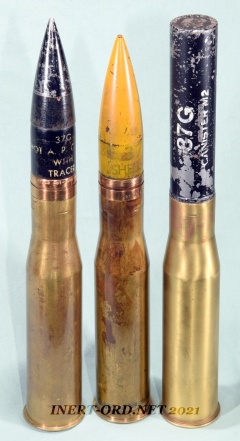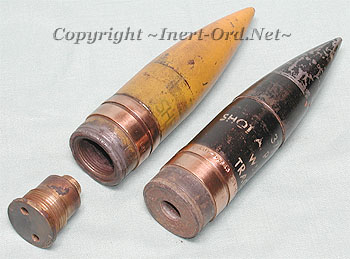
APC-T M51 / HE M63 / M2 Canister
Developed during the late 1930's, the M3 Anti Tank Gun was essentially a copy of the German PAK 36, with minor modifications.
Unfortunately, by 1942 that caliber was obsolete for use against modern armor in Europe.
Still, it served through the entire war and proved very useful in the Pacific theater.
A total of about 78 million rounds of ammunition were produced, of that, roughly 70% were Armor Piercing, 21% High Explosive, and 9% Canister.
For the collector, relative rarity of these rounds aligns with those numbers, with the M2 canister being extremely difficult to find.
Headstamp dates are most likely 1942 or 1943, which were the years of highest production.


 U.S. HE and APC-T Projectiles
U.S. HE and APC-T Projectiles

